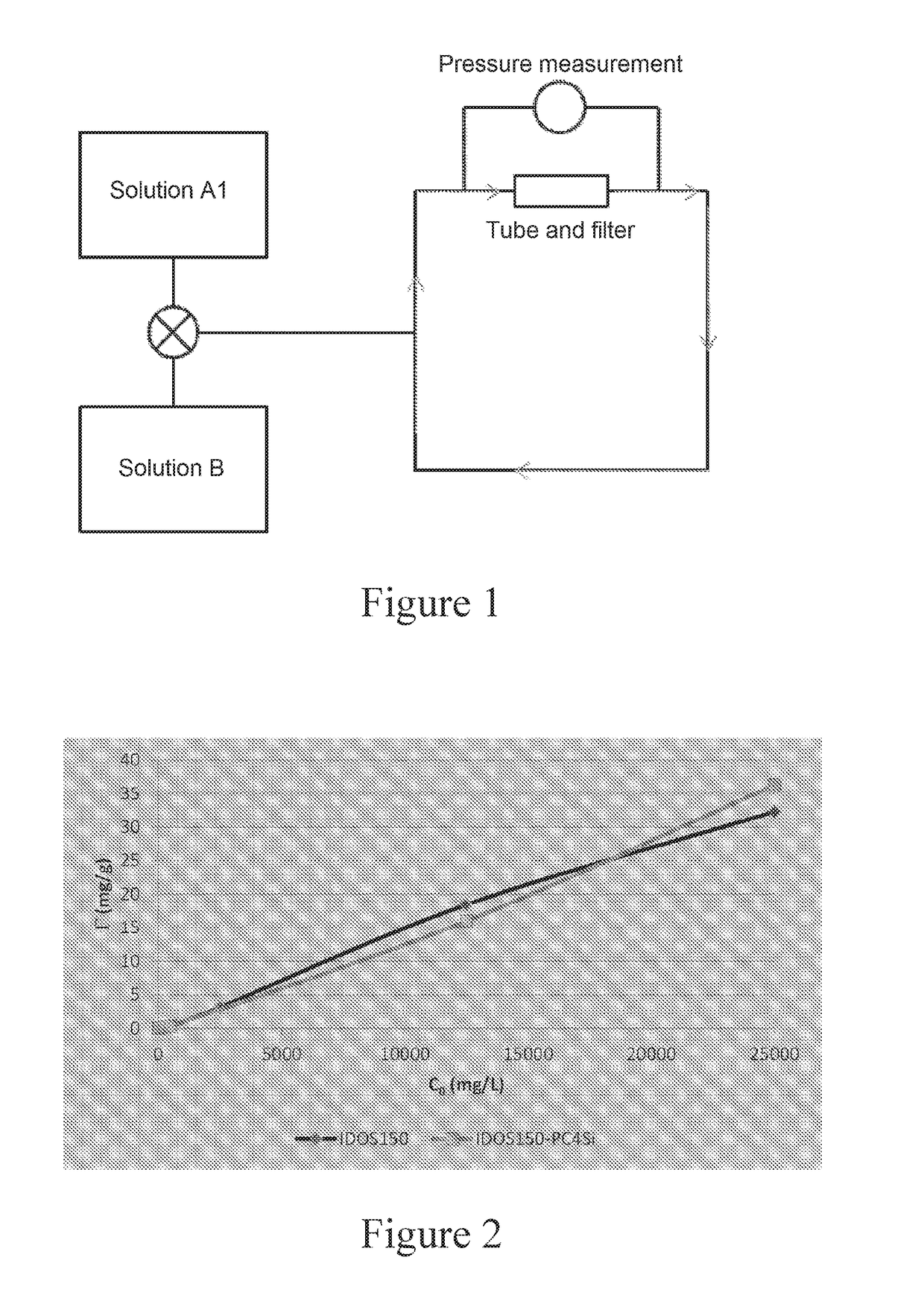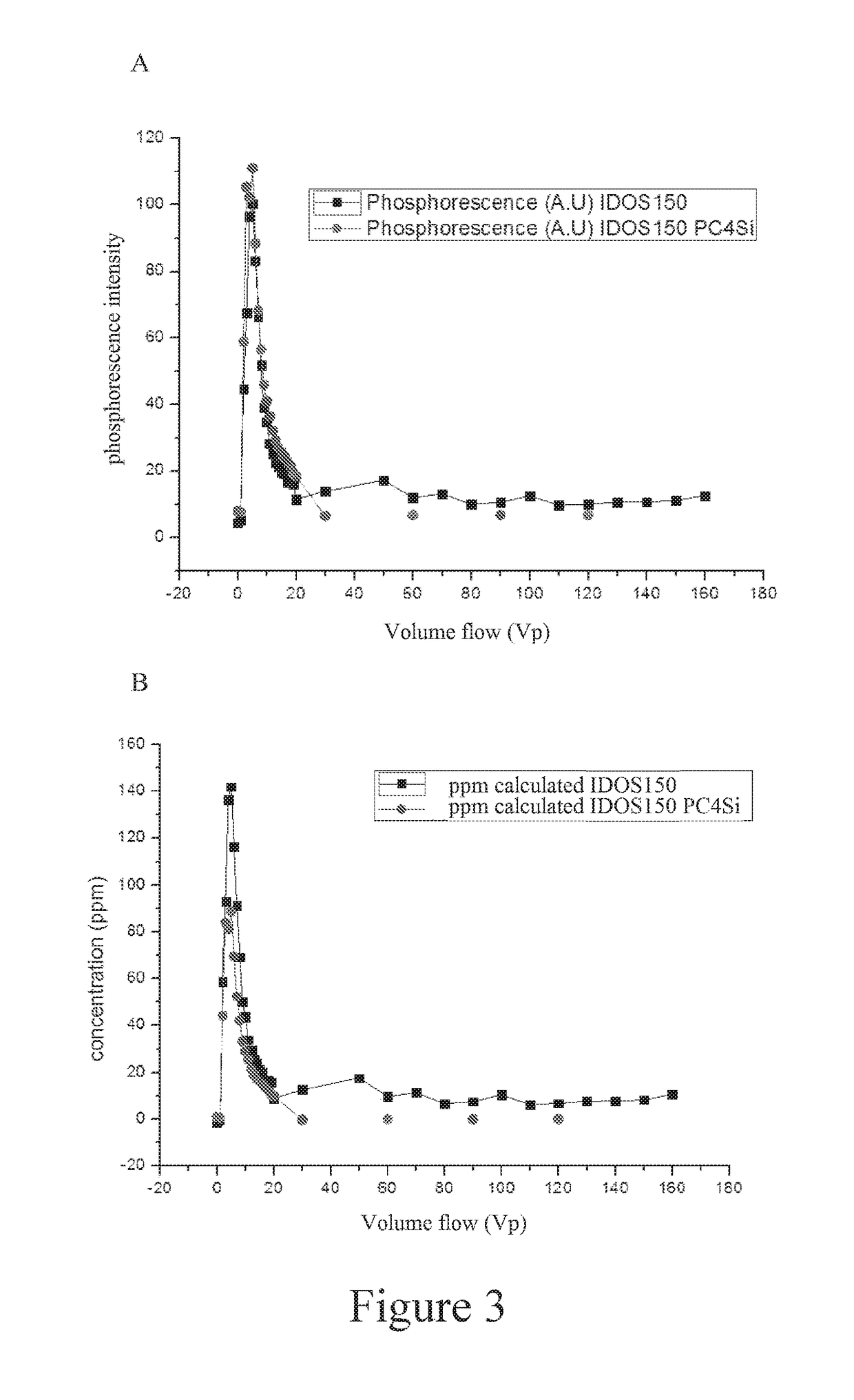Nano-inhibitors
a technology of nano-inhibitors and inhibitors, which is applied in the preparation of microcapsules, lanthanide oxides/hydroxides, chemistry apparatuses and processes, etc., can solve the problems of affecting the performance of the system, polluting the duct and surface equipment, and blocking the pumping system and safety valve, etc., and achieves a remarkable resistance to degradation
- Summary
- Abstract
- Description
- Claims
- Application Information
AI Technical Summary
Benefits of technology
Problems solved by technology
Method used
Image
Examples
example 1
on of Small Gadolinium Oxide Cores Coated with a Layer of Polysiloxane (or PC4Si)
[0086]A colloid of Gd2O3 is prepared in a 10 L temperature controlled reactor and equipped with a mechanical stirrer by dissolving 167.3 g of gadolinium chloride hexahydrate in 3 L of diethylene glycol. The mixture is then heated to 140° C. and stirred at about 300 rpm for 2 to 3 hours, until complete dissolution of the crystals.
[0087]Once all gadolinium chloride crystals are dissolved, is added dropwise 44.55 mL of 10 M NaOH solution. The mixture is stirred at about 250 rpm at 180° C. for 5 hours. The same mixture is then allowed to cool to room temperature (20 to 30° C.) under stirring at 200 rpm for at least 12 hours.
[0088]Measuring the average size of the cores is carried out by laser granulometry directly in DEG without dilution. The mean diameter in volume is 1.5±0.5 nm with less than 5% of particles beyond 5 nm.
[0089]Around these particles, a layer of functionalized polysiloxane is synthesized by...
example 2
on of an Inhibiting Solution of Sodium Salt of Poly (Acid 4-styreenesulphonic-co-maleic Acid) (or Fl1)
[0096]The polymer Fl1, purchased from Sigma Aldrich, (CAS: 68037-40-1; [CH2CH(C6H4SO3R)]x[CH(CO2R)CH(CO2R)]y, R=H or Na), has a molecular weight of about 20 kDa. The polymer has a ratio of three styrene sulphonic acid functions to one maleic acid function.
[0097]One hundred grams of Fl1 are weighed in a 1 L bottle. 1 L of ultra-pure water is then added and a stirring is maintained until total dissolution.
example 3
on of a Solution of Nano Inhibitors of PC4Si and of Sodium Salt of Poly (Acid 4-styrenesulphonic-co-maleic Acid) (or Fl1-PC4Si)
[0098]In a 100 mL bottle is set to react 50 mL of the solution of Fl1, obtained according to the protocol of example 2, with 2.5 mL of the of PC4Si, obtained according to the example 1, and 47.5 mL of diethylene glycol. The whole is maintained under stirring let for 24 h.
[0099]Measuring the average particle size is then performed by laser granulometry after a dilution of ten times in ultra-pure water. The mean diameter in volume is 55 nm±5.0 nm.
PUM
| Property | Measurement | Unit |
|---|---|---|
| Fraction | aaaaa | aaaaa |
| Fraction | aaaaa | aaaaa |
| Pressure | aaaaa | aaaaa |
Abstract
Description
Claims
Application Information
 Login to View More
Login to View More - R&D
- Intellectual Property
- Life Sciences
- Materials
- Tech Scout
- Unparalleled Data Quality
- Higher Quality Content
- 60% Fewer Hallucinations
Browse by: Latest US Patents, China's latest patents, Technical Efficacy Thesaurus, Application Domain, Technology Topic, Popular Technical Reports.
© 2025 PatSnap. All rights reserved.Legal|Privacy policy|Modern Slavery Act Transparency Statement|Sitemap|About US| Contact US: help@patsnap.com



